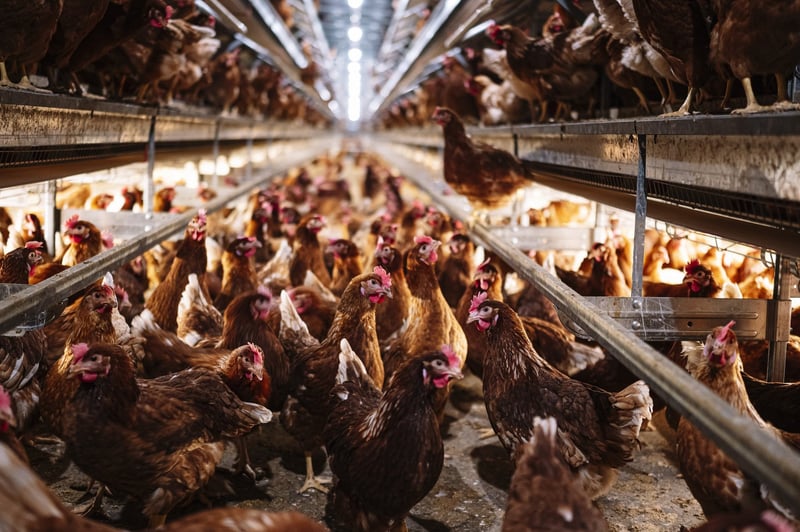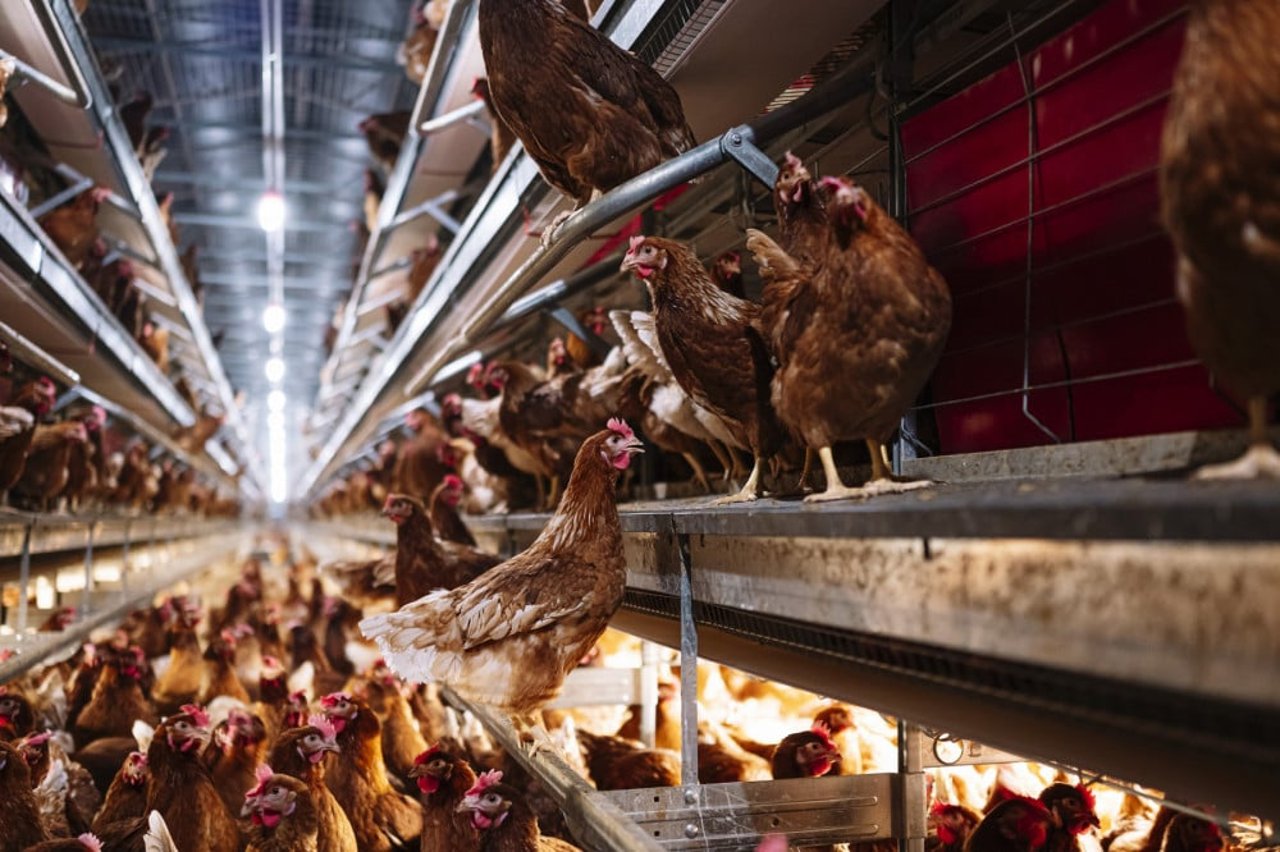
The terms “cage-free” and “free range” are not interchangeable.
While the question “why has the price of eggs been increasing?” has received considerable attention in recent news (for more on this, check out our blog on the bird flu outbreaks behind the price spike), a perhaps more common question posed by shoppers is what the terms used on egg packaging actually mean.
You may be familiar with seeing the phrases “cage-free” and “free range” on egg cartons in your local grocer, and may have even asked yourself from time to time, “what is the difference?”
It’s an egg-cellent question (had to do it!). The sad truth is that both terms are incredibly misleading and can be used on eggs from factory farms. Read more about both labels below, as well as how opting out of eggs is the best way to be sure you’re protecting chickens.
What is cage-free?
If you see the “cage-free” term on an egg carton, it means that the hens who laid those eggs were not confined to battery cages. The majority of laying hens in the US are raised in cage-based systems, sharing a small cage with as many as nine other hens with not enough space to turn around or stretch her wings. Birds who die are likely to remain in the cages for days or weeks, exposing surviving hens to pathogens and disease.
Pressure from consumers and advocates has led to a shift towards cage-free systems that house birds in open barns. In 2022, it was estimated that 34% of laying hens in the US lived in cage-free systems, a significant increase from just 10% in 2016.
It is important to be clear that, while eliminating cruel battery cages is necessary to protect laying hens from a significant source of suffering, large cage-free egg facilities are still factory farms that exploit and harm animals. Hens in cage-free barns may still be in overcrowded conditions with not enough space to move freely or stretch their wings.
What is free range?
Free range “is one of the potentially most misleading labels” due to how different the actual conditions may be from how consumers interpret the claim. An egg company can use the term “free range” if producers provide some access to the outdoors for the hens. Sadly, beyond that vague stipulation, there are no specific requirements for the conditions of that outdoor area, the size, or even how often or for how long that access must actually be provided. Free range claims are also not verified through on-farm inspection!
The laying hens providing those “free range” eggs are likely still suffering in factory farming conditions, never seeing sunlight or foraging in pastures. The surface of the outdoor area may be concrete or other hard material, the amount of space may only be enough for a small number of birds in the flock, and the door to the outdoor area could be hard for the birds to find or even closed for a majority of their lives. As with cage-free, the hens may be overcrowded in the barns with not enough space to move freely or stretch their wings. This is a far cry from what the term “free range” communicates to shoppers.
Cage-free and free range do more harm than good. The best way to ensure you’re not supporting factory farms is to use only animal-free egg products or ingredients that provide the same taste or function. Several products are available, such as JUST Egg or Zero Egg, that can easily be used in your bakes, scrambles, or other egg-based dishes.
